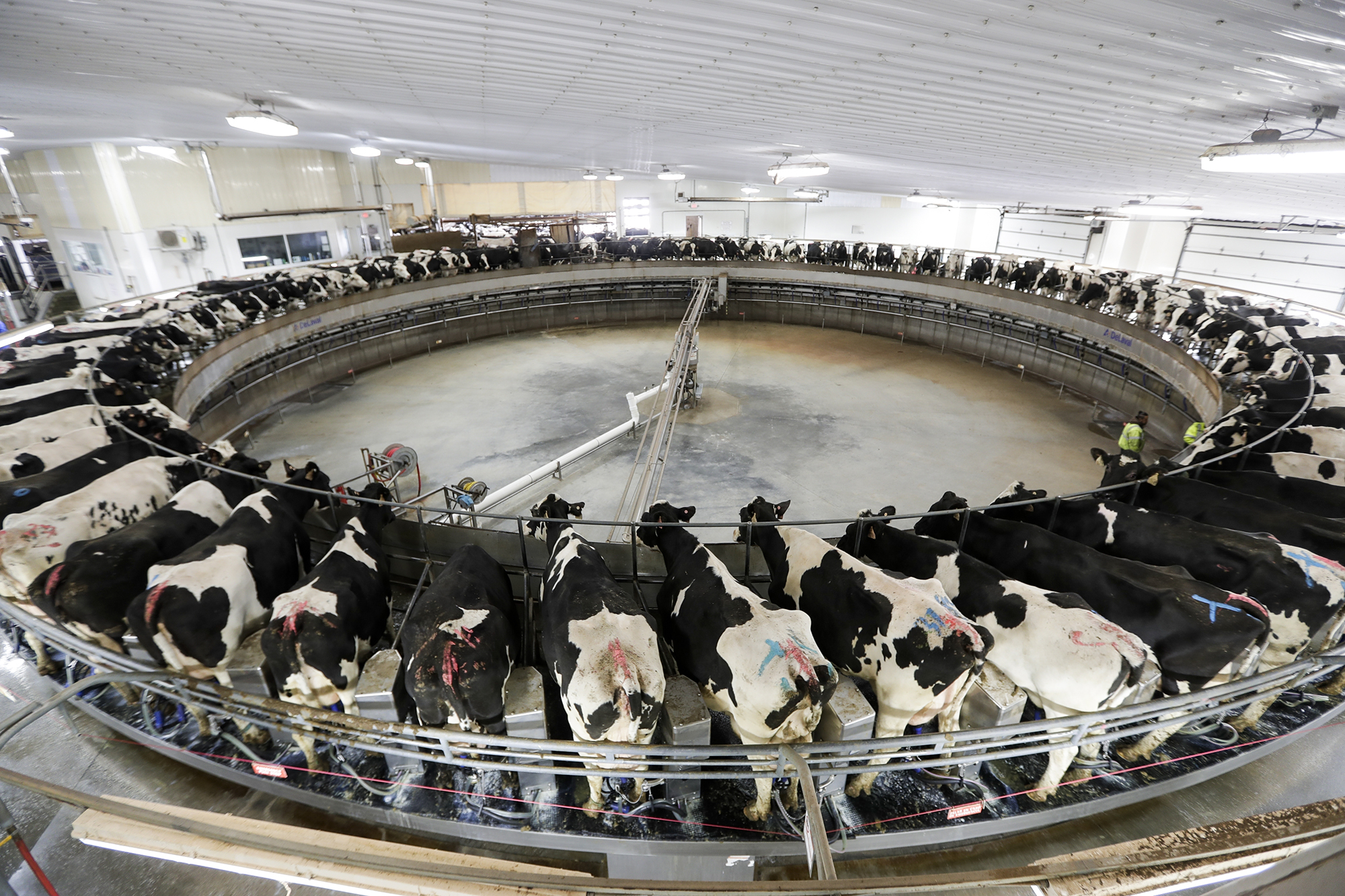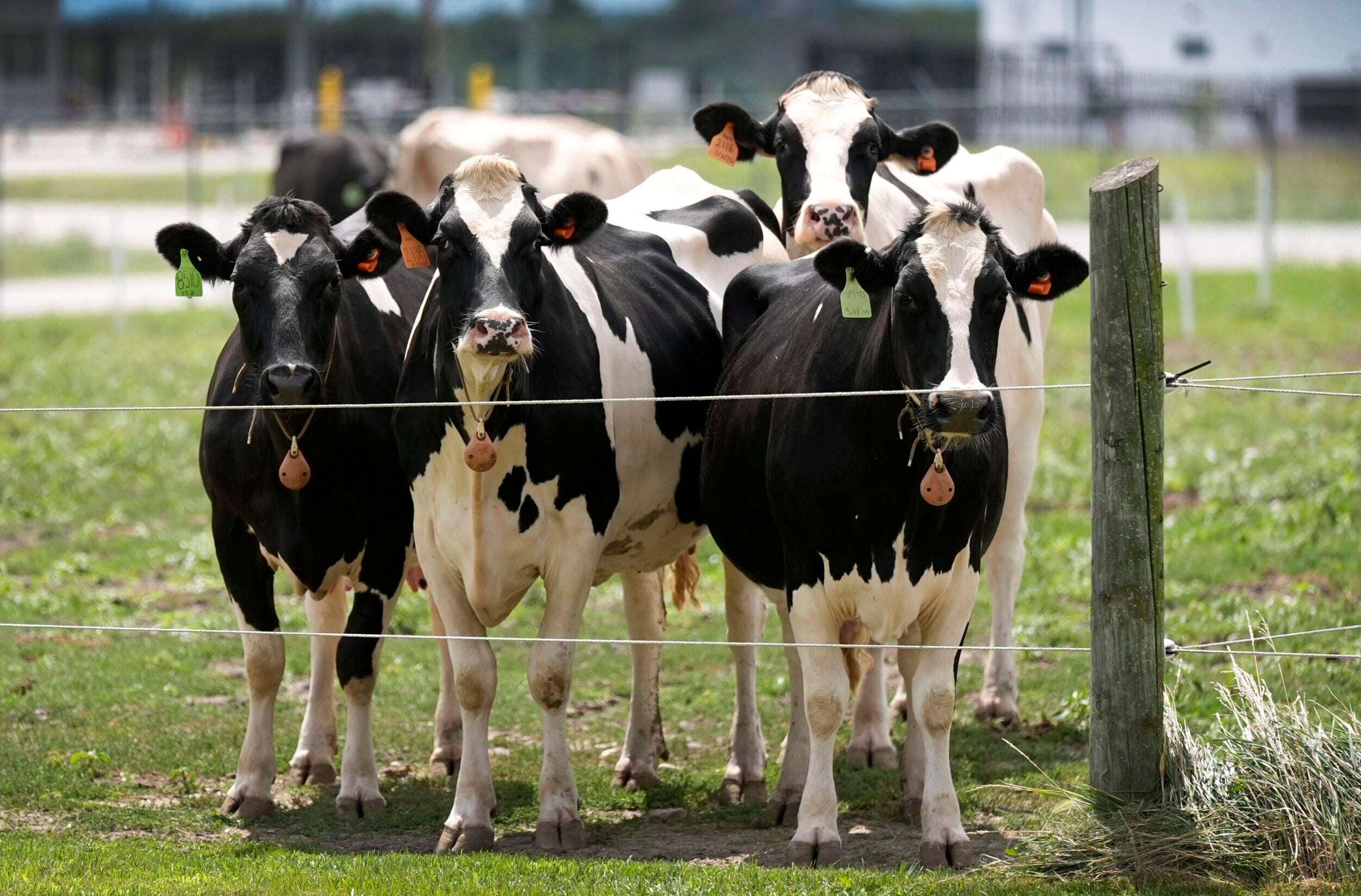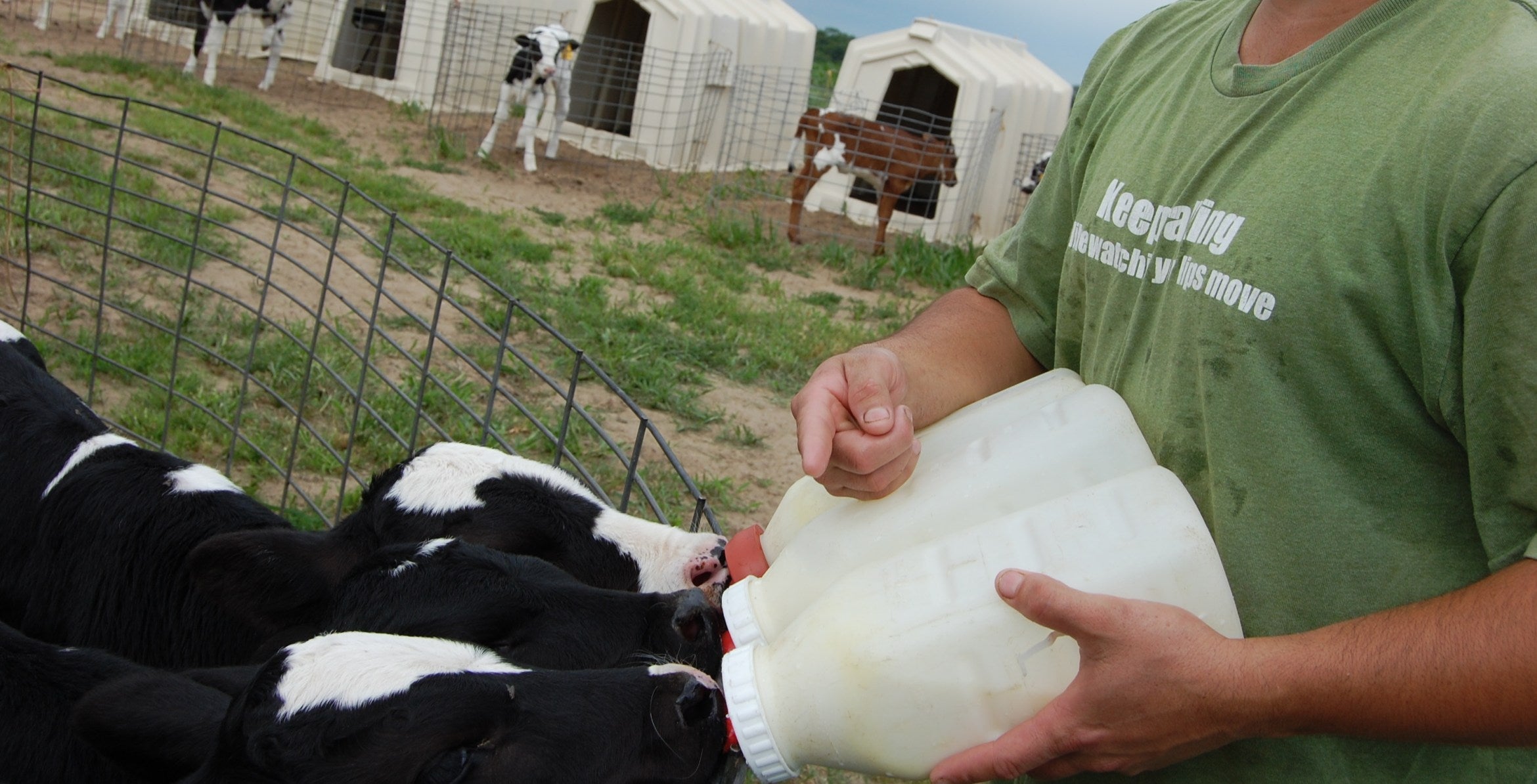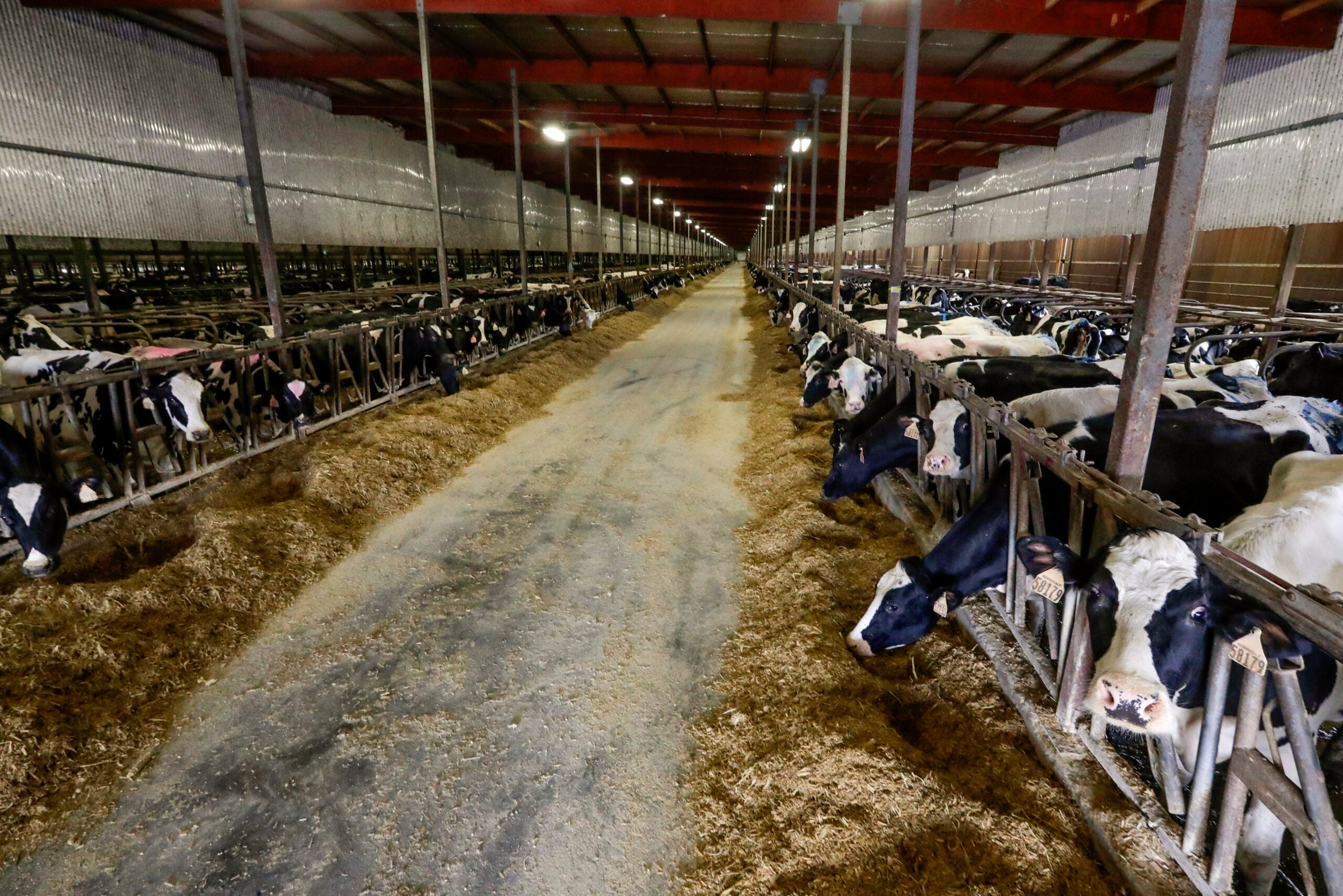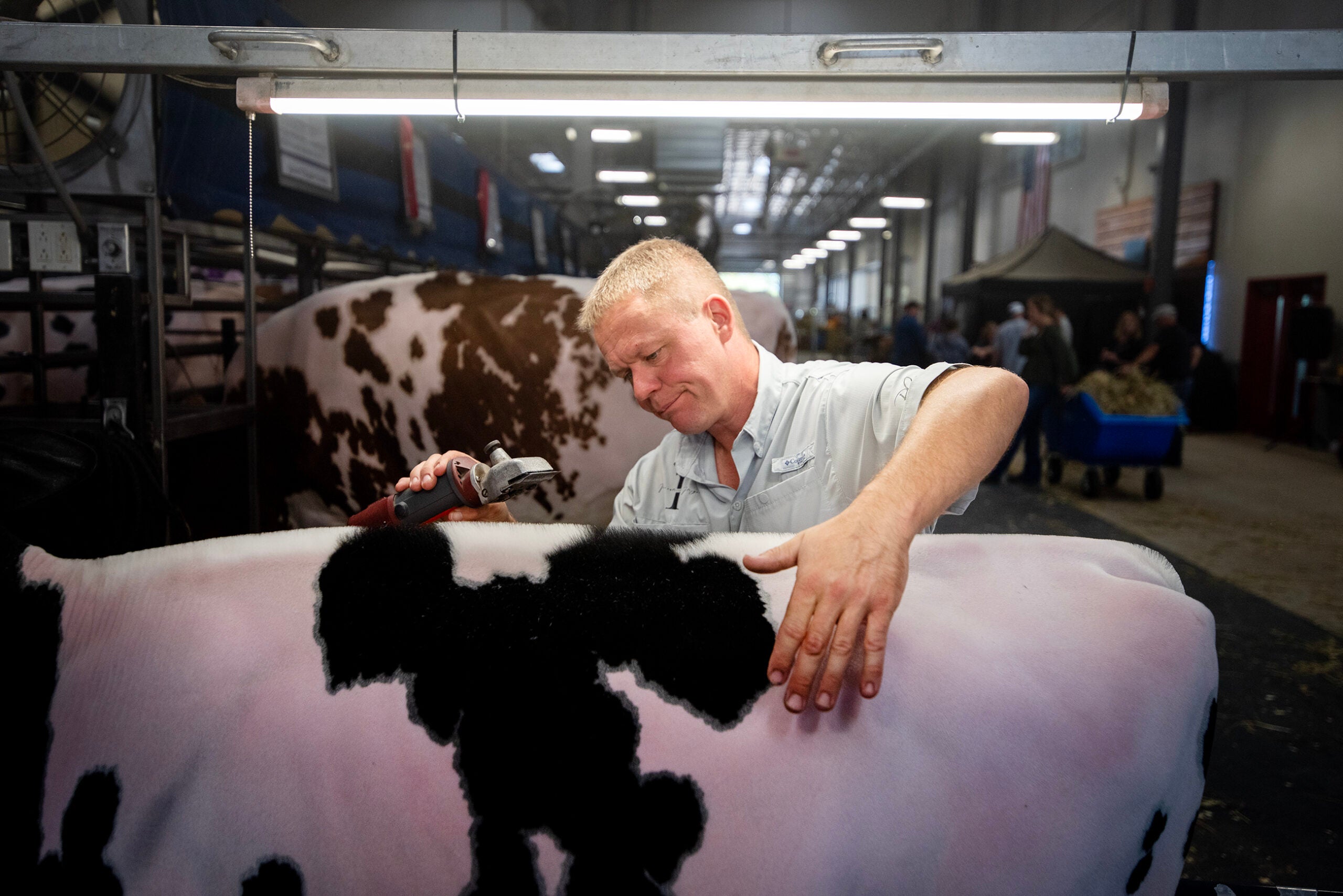More Wisconsin dairy farmers believe they’ll still be farming in five years compared to a decade ago.
That’s according to the latest survey of dairy producers completed by the state Department of Agriculture, Trade and Consumer Protection.
Working with the University of Wisconsin-Madison, the department surveyed 2,871 farmers at the start of the year. It’s the first time the agency has done the survey since 2010.
News with a little more humanity
WPR’s “Wisconsin Today” newsletter keeps you connected to the state you love without feeling overwhelmed. No paywall. No agenda. No corporate filter.
Eighty-three percent of survey respondents said they’ll still be farming in five years, with about two-thirds of farmers planning to milk about the same number of cows.
That’s up from about 75 percent of respondents who said they planned to remain farming in the 2010 survey.
DATP Secretary Randy Romanski said the more optimistic outlook is surprising considering many responses were received at the start of March.
“These responses were being sent to us during the time of COVID-19 hitting the dairy industry, hitting Wisconsin,” Romanski said. “It was interesting that that number was as high as it was compared to 2010 when the survey went out during COVID-19.”
Mark Stephenson, director of dairy policy analysis at UW-Madison, helped develop the survey. He said the response is worth noting because the number of farms who said they planned to exit the industry in the 2010 survey ended up being fairly accurate.
“It frankly is just about the pace that we’ve been on, absent the last couple of bigger farm loss years,” Stephenson said. “I think that gave us reasonable guidance about how many people felt that they probably wouldn’t be in business by the time we get to this survey.”
Stephenson said COVID-19 also may have impacted the issues that farmers feel are most challenging to the industry.
Seventy percent of respondents said balancing milk supply and demand was a top disruptor for the dairy industry in the next five years.
“Right at that time, we were having a lot of producers who were being asked or told to try to keep milk production in check, that we had a system that couldn’t handle that much milk right now,” Stephenson said.
Stephenson said last year’s tough crop season likely influenced the way dairy producers saw their own personal challenges in the next five years.
Extreme weather conditions received the most votes as a primary challenge to continuing milking cows in all but the two largest farm size categories, with 46 percent of all respondents choosing it as a top issue.
“People were probably thinking about 2019,” Stephenson said. “Recall, we had a terrifically bad season in terms of getting crops planted and then getting them harvested, immature product, inadequate supplies of forages.”
For the smallest farms, managing day-to-day expenses was just as common a challenge for continuing their operations. Regulations was the most common response among the largest farms.
Almost half of the surveyed dairy producers said they did not have family income from an off-farm job. Even on farms with fewer than 50 cows, 38 percent did not have off-farm income.
Stephenson said these farms likely need the labor from all family members to keep the farm operating. But he said the decision has consequences.
“Oftentimes, one of the primary motivators (for off-farm employment) is access to healthcare,” Stephenson said. “This basically is meaning that even on these small farms, that 38 percent of folks are either going without healthcare or having to purchase it on their own. And that can be a big deal.”
Forty-eight percent of respondents said the primary decision maker on the farm was between 50 and 64 years old. Only 42 percent said they had a successor identified for their farm, with the most common successor being a child or multiple children.
Wisconsin Public Radio, © Copyright 2026, Board of Regents of the University of Wisconsin System and Wisconsin Educational Communications Board.

